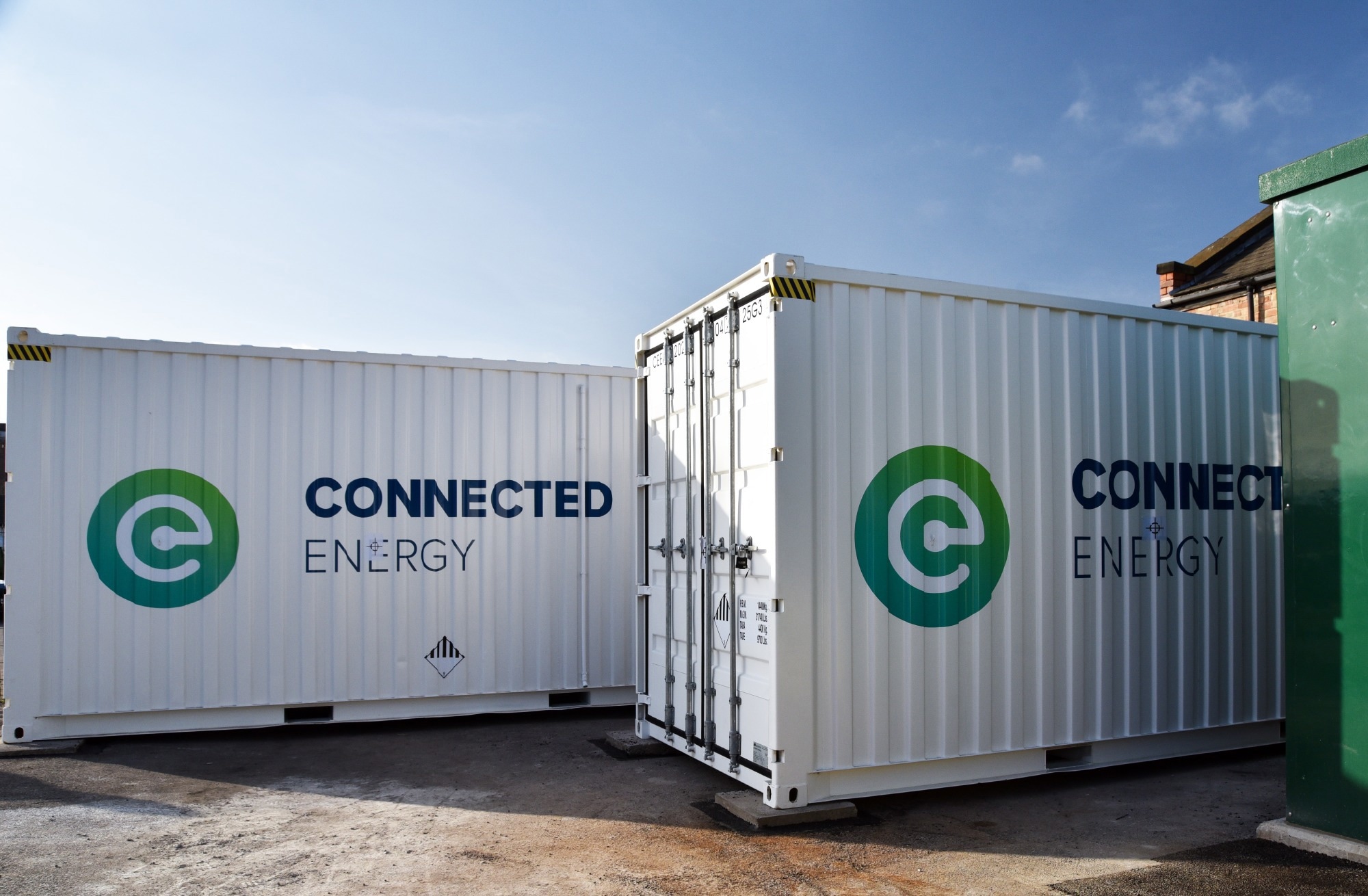Bi-directional EV charging, solar and battery energy storage, installed at Nottingham City Council’s fleet depot, will demonstrate a new energy ecosystem.

Image Credit: Connected Energy
The installation of two E-STOR battery energy storage systems, made by Connected Energy from second life Renault batteries, at a site in Nottingham marks the launch of an energy ecosystem described as ‘next era energy management’.
Nottingham City Council’s Eastcroft Depot, located just outside the city centre, will demonstrate how a fleet depot can intelligently manage the energy demands caused by vehicle electrification. Home to a 200-strong fleet; the depot includes 40 vehicle-to-grid (V2G) bi-directional chargers with three solar arrays and Connected Energy’s two 300kW E-STOR energy storage systems supporting the charging demands.
The energy ecosystem will be a blueprint for how premises across the country facing extreme energy challenges from physical supply restrictions, rural locations or legacy buildings can install EV chargers and increase their energy consumption, whilst managing their power demands.
According to Connected Energy CEO, Matthew Lumsden, what makes this installation of national interest is the innovative approach of combining a range of technologies together to overcome energy challenges.
“When fleet and estate managers install EV chargers at thousands of premises across the country, many will discover that their energy supply is insufficient. Others are likely to find that EV charging brings unmanageable peak charges. The energy ecosystem for Nottingham City Council overcomes all these challenges and shows a path ahead that others can follow.” he said.
The site’s solar arrays with a combined generation of 176kwp will enable the site to create and use its own clean energy which is then stored in the Connected Energy E-STOR systems. An overarching energy management software solution, developed by Hangar19, will communicate across all the technologies, giving the site the flexibility to make the best possible use of its own energy and provide services to the grid.
Nottingham City Council will also be using its battery storage to manage costs as Steve Cornes, Principal Energy Projects Officer explains:
“As the City Council fleet transitions to electric, including large vehicles such as refuse lorries, we will be using the battery energy storage system to prop up the grid. By using intelligently managed BESS and V2G, on-site solar energy can be maximised and the depot will effectively be able to isolate itself from the grid. The systems will allow us to ensure production costs of electricity will be negligible, allowing us to peak shave so that we can avoid high electricity tariffs and give us the opportunity to trade electricity back to the grid.”
The installation is a key part of the Nottingham’s ambition to become the first carbon-neutral city in the country by 2028, and as a successful marriage between green energy and transport solutions, provides a valuable blueprint which others can follow, as Steve confirms:
“Our main aim is to reduce the carbon intensity of the operations on site. Projects such as this are critical as we work towards becoming Carbon Neutral by 2028 and this will demonstrate what is possible – both for the City Council itself but for similar buildings throughout the UK.”
Steve also highlighted the significance of the choice of battery energy storage supplier:
“The use of second life batteries in our energy storage was a key factor when choosing to work with Connected Energy. This provides us with a much less carbon intensive product.”
Matthew Lumsden Connected Energy CEO said:
“We are delighted to have been chosen by Nottingham City Council to supply our E-STOR battery storage systems, and are proud to collaborate with so many other suppliers of new technological solutions to complete this installation together. Together we are addressing the biggest challenge of our age, climate change and energy security, making this an energy ecosystem of a new era.”
The energy solution at this site was funded by Interreg NW Europe ‘CleanMobilEnergy (CME)’, with a contribution from Innovate UK, but other organisations can explore Connected Energy’s ‘Battery Storage as a Service’ route, developed to manage costs for solutions like Nottingham’s. With this funding approach, often described as a ‘subscription service’, all capital and operating costs are wrapped into one simple monthly payment, and users of the service are able to receive grid payments directly. This makes managing costs much simpler and removes the need to use upfront capital.